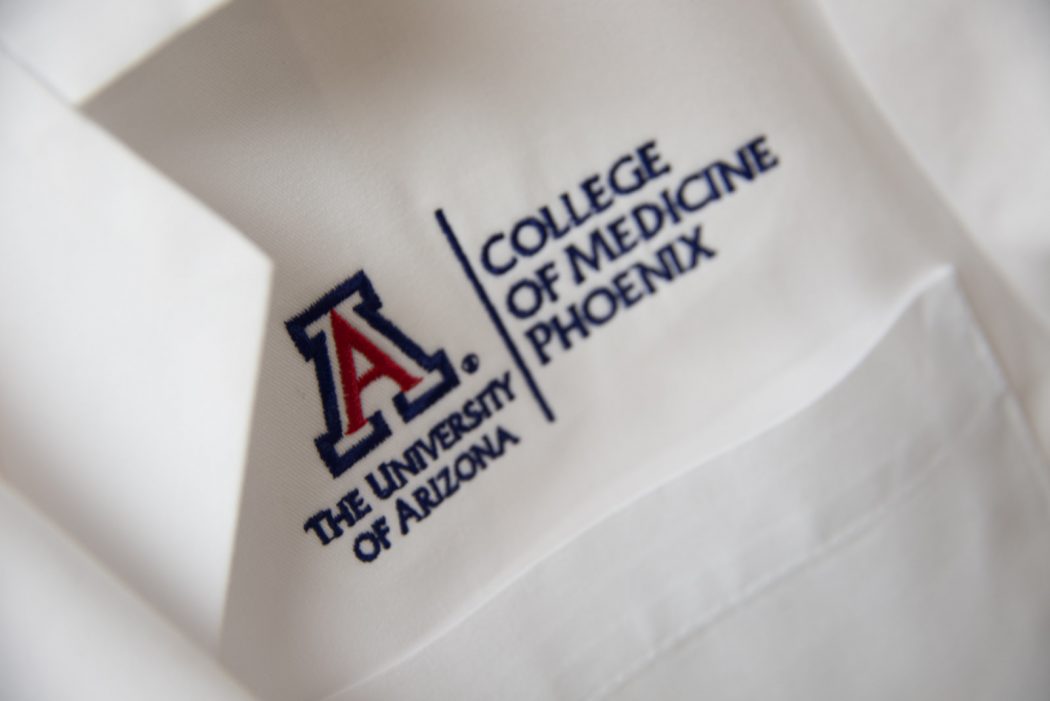It’s July again in Phoenix. For most, this just signals our yearly retreat into the great indoors as the 110 °F weather scorches the earth and melts our tires to the asphalt. For the UA College of Medicine – Phoenix, however, this is a special time of year as we give a very warm welcome indeed to our new class of first-year medical students.
Next week, the Class of 2021 will receive their white coats, a rite of passage for which they have spent countless hours studying, volunteering, researching, applying, interviewing, and hoping to achieve. Nowadays, this ceremony is seen as an integral part of every medical school, but many would be surprised to learn that it has only existed for a few short decades. What is the significance of the white coat ceremony, then, and where did it come from?
Through the late 19th century, Western physicians usually dressed in black formal attire to reflect the seriousness of their interactions with patients. As science progressed, along with a better understanding of hygiene, the white laboratory coat was gradually adopted to represent scientific rigor and cleanliness. Today, it is still widely worn by those who work in medicine and scientific research.
Now that my class has reached our fourth year, I have to admit that our own white coat ceremony feels like it happened a lifetime ago. I remember that we were all eager to finally don our white coats and to start feeling like medical students. As the years passed, some began to feel as if the coat were a burden instead: a flag signaling that we know nothing on the wards, an impossible laundry item with permanent stains, an unnecessary layer in the Phoenix summer.
Looking back, however, there have also been practical benefits associated with wearing a white coat. If someone forgets your name, they can just read it off of your coat without having to awkwardly ask you again. If you are a woman, no one will automatically assume that you are the nurse. Although it is hot outside, it is always cold inside the hospital, so the extra layer actually comes in handy. And the pockets are great for holding notes and, most importantly, snacks for those shifts when you do not have time to grab a full meal.
The perception of the white coat has similarly been variable amongst physicians and patients alike. Some see it as an honor while others see it as a symbol of elitism. And while many patients prefer that their healthcare providers wear professional dress with a white coat, these opinions vary with age, with younger patients often preferring less formal attire. These divergent attitudes may lead us to question the place of the white coat in modern medicine.
Perhaps, then, it is the role of ceremony to clarify the symbolism of the coat and to instill in medical students the weight of responsibility it confers. The first white coat ceremony was held by Pritzker School of Medicine at the University of Chicago in 1989, an idea that was then adapted into the first “full-fledged” white coat ceremony sponsored by the Arnold P. Gold Foundation and Columbia University College of Physicians and Surgeons in 1993. By the turn of the millennium, the ceremony had been adopted by the vast majority of medical schools in the country. As with any other uniform, the white coat can be seen as just an article of clothing that is associated with a particular job. The motivation behind the white coat ceremony, however, was to emphasize compassion in medicine at the very beginning of medical training, not just at graduation when students become doctors, and to link this idea of patient-centered humanism to the coat we would be expected to wear. The white coat also connects us to everyone else who shares this profession, and the ceremony, in particular, offers us an opportunity to reflect on why we have chosen this path and what we hope to accomplish in the future.
As I face my last year with a short white coat, I will admit that my feelings are mixed. On one hand, I overheat easily at any temperature. On the other, I can picture it with me throughout my time here: Doctoring sessions, Capstones, CHIP events, CCE, 3rd-year clerkships, Step 2CS, and now 4th year as well. In it, I have examined more patients than I can remember, I have sprinted through corridors and stairwells, I have trudged around in post-call delirium, and I have enjoyed second dessert in our hospital cafeterias. I can see it hugging the backs of chairs in dozens of resident rooms, and I can see it amongst a sea of white and off-white coats hanging outside of the ORs. It will always be woven into my memories of medical school and everything that I have learned these short few years, and for that, I will always be grateful.
And so, to our newest cohort of schoolmates, I congratulate you on your achievements. Whether you come to cherish your coat or not, it will always be there to represent your place in the medical world and the journey you will now begin. So when you wear your white coat, wear it proudly—and always carry a protein bar.
- Hochberg MS. History of medicine: The doctor’s white coat—an historical perspective. AMA J Ethics. 2007;9(4):310-314.
- Petrilli CM et al. Understanding the role of physician attire on patient perceptions: a systematic review of the literature—targeting attire to improve likelihood of rapport (TAILOR) investigations. BMJ Open. 2015;5(1):e006578. doi: 10.1136/bmjopen-2014-006578
- White Coat Ceremony. Gold Foundation. http://www.gold-foundation.org/programs/white-coat-ceremony. Accessed July 2, 2017
- White Coat Ceremony. The University of Chicago. https://pritzker.uchicago.edu/page/white-coat-ceremony. Accessed July 2, 2017
Sophie Sun is a medical student at The University of Arizona College of Medicine – Phoenix, class of 2018. She completed her undergraduate degree at UC Berkeley and earned a PhD in chemical biology from The Scripps Research Institute, where she focused on unnatural amino acid incorporation and antibody engineering. Some of her current academic interests include student-run free clinics, vaccine compliance, and accountability in research. However, she might sound more excited when talking to you about classic American cinema, urban compost collection, and French dessert recipes. She is currently pursuing a career as a Med-Peds physician.


